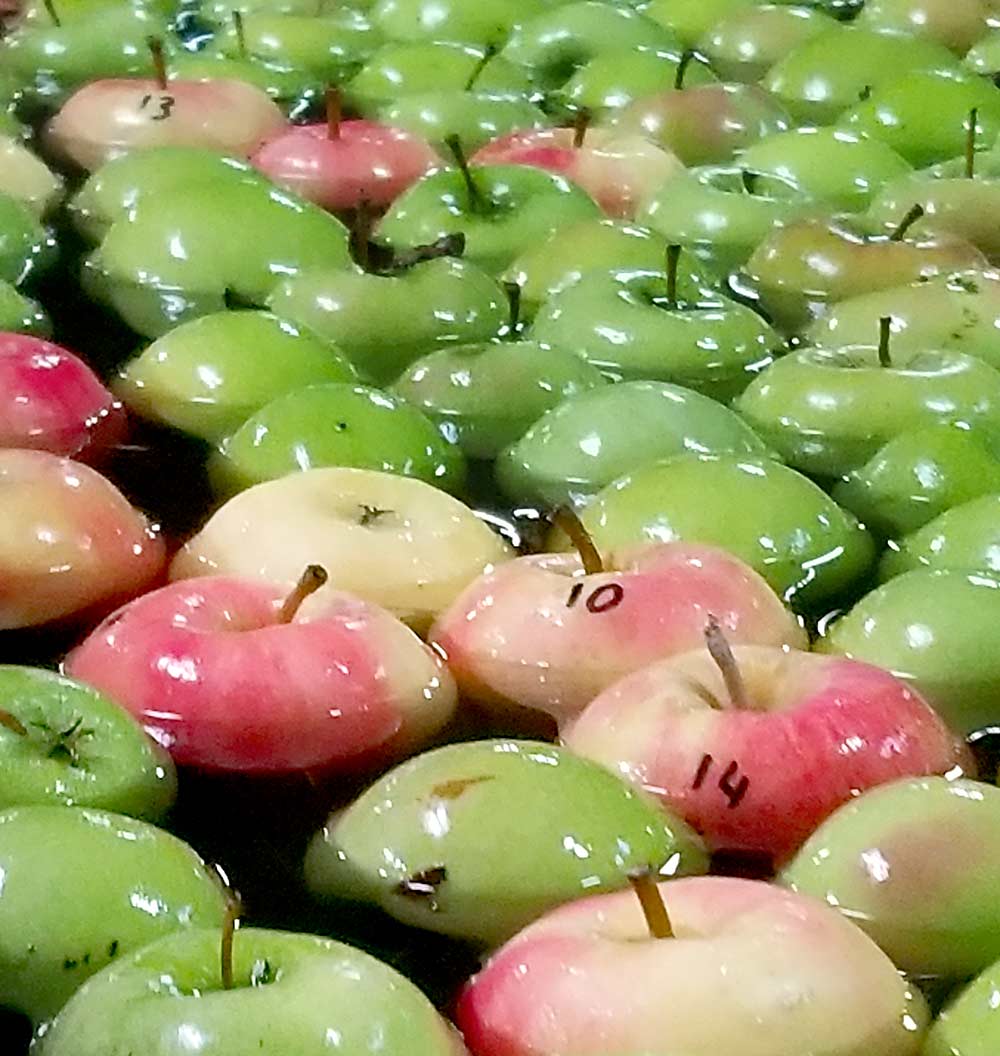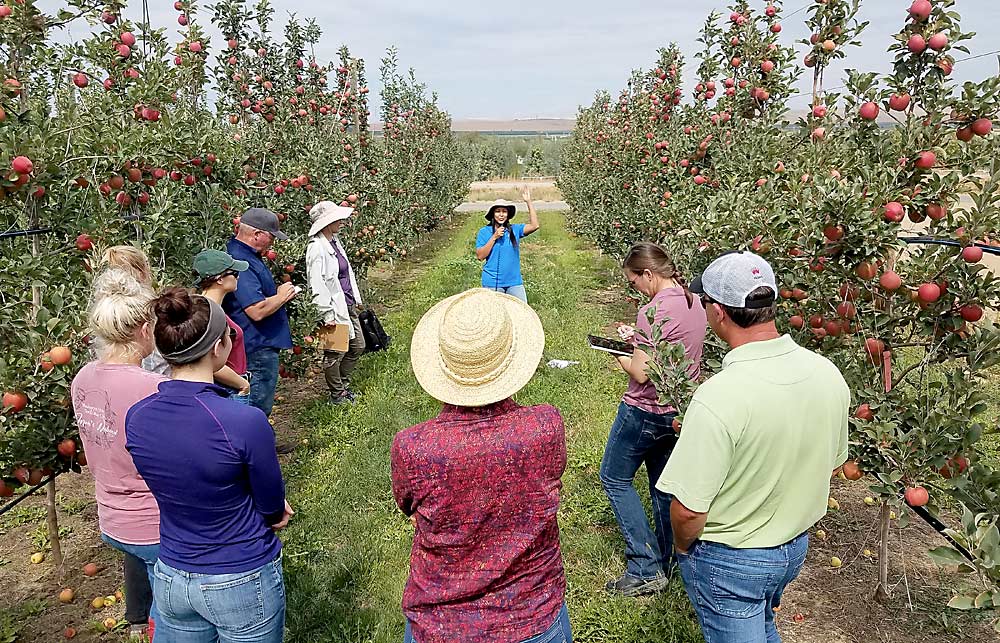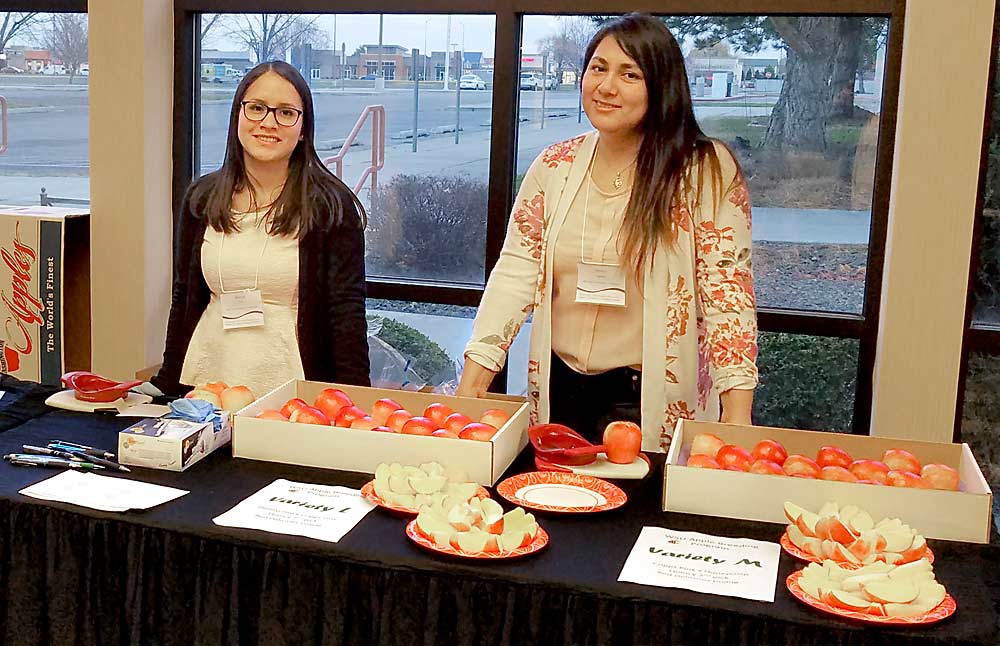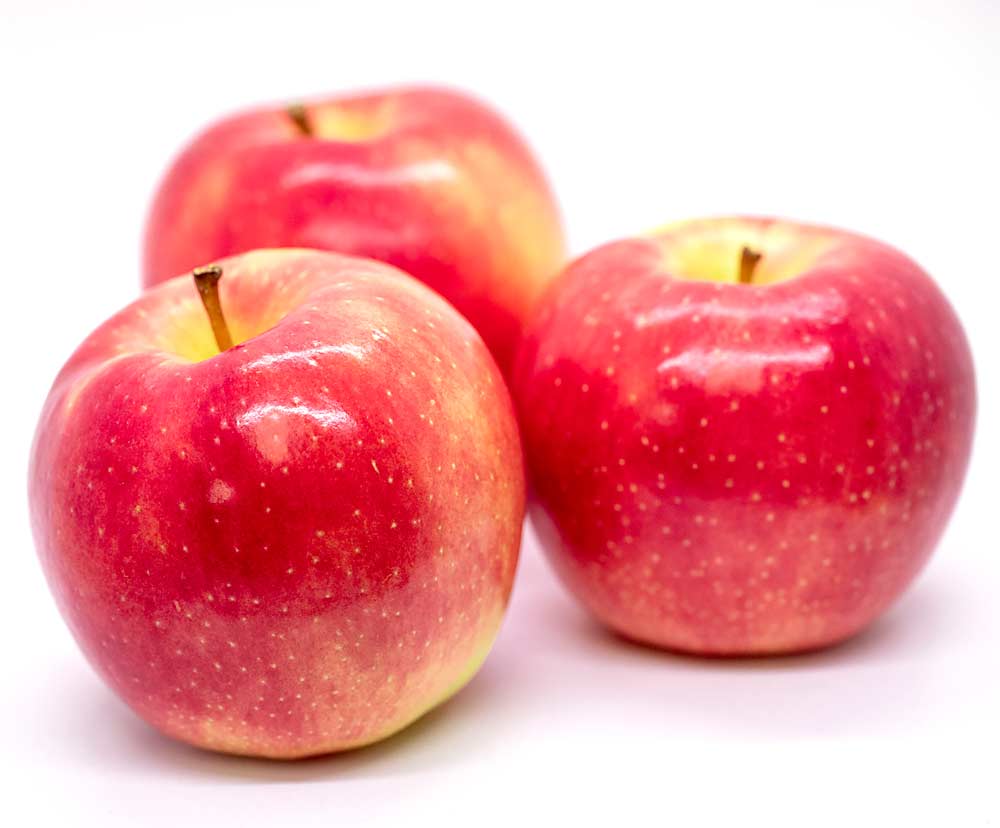
The Washington State University apple breeding program was established in 1994 by Bruce Barritt with the goal of developing a portfolio of new, improved, unique apple varieties suitable for Washington conditions and available to Washington’s growers. The program, led by Kate Evans since 2008, is structured in phases, starting from Phase 0, the cross-hybridization to create new genetic combinations, to Phase 3 (P3), the precommercialization stage.
P3 is focused on evaluating the commercial potential of the breeding program’s elite selections. In this phase, at least 50 trees per selection are planted in one or more P3 grower-cooperator orchard sites. The rootstock and production system for each site is chosen based on grower-cooperator preferences. Each selection remains in P3 for up to six years before being released or discontinued by Evans.
The Washington Tree Fruit Research Commission (WTFRC) has funded the WSU apple breeding program since its inception in 1994, including the P3 evaluations starting in 2008. The WTFRC’s internal program received a total of $611,409 specifically to fund P3. Tom Auvil and Ines Hanrahan managed initial P3 evaluations, and in 2018 Manoella Mendoza took on coordinating P3 activities. This third-party evaluation by non-WSU staff adds an important layer of credibility to the selection descriptions presented by the breeding program.

WTFRC funding for the entire breeding program was withdrawn in 2019 following the receipt of royalty income from WA 38, which covered P3 expenditures for the 2019–20 season. Commission funding for P3 resumed in 2020 for a three-year period to support our work evaluating the elite selections.
Mendoza developed field and storage protocols, with input from Evans and her team, as well as the apple breeding program advisory committee, a group of apple industry representatives selected by Evans. The advisory committee participation is crucial to assure the P3 evaluation aligns with the interests of the Washington apple industry. According to their recommendations, an apple selection that is suitable for commercialization should ideally have the potential to be harvested in a single pick and have consistent high quality through long storage.
“The partnerships between the WSU apple breeding program, Washington Tree Fruit Research Commission, Stemilt and other industry collaborators is a great way to provide new, superior apple selections to the Washington tree fruit industry and consumers across the globe,” said Hannah Walters, orchard project lead for Stemilt Growers. “It is a privilege to see new selections firsthand and help the industry take the right steps to learn how to optimize growth and produce high-quality, flavorful apples that delight consumers.”

P3 evaluations
Elite selection evaluations start during spring with determination of full bloom date in comparison with standard apple varieties and continue throughout the year until harvest. Growth habit (tree structure and vigor), fruit set pattern (singles or doubles versus full clusters), biennial bearing tendency and incidence of disorders and diseases like sunburn, bitter pit and powdery mildew are documented. Horticultural practices are applied based on the needs of each selection; crop load is largely managed by hand-thinning.
Prior to harvest, the orchards are visited two to three times a week to establish a harvest date for each selection. Starch degradation is the main parameter used to determine harvest time, but other traits like overcolor, background color, flavor and firmness are also observed. Typically, each selection is harvested in three picks, depending on crop load. Multiple harvests are desirable to determine the optimum harvest window based on field characteristics, quality at harvest and storability (postharvest quality and disorder incidence), which will ultimately determine if the selection can be strip picked in a single harvest. We conduct cull analyses at harvest for each pick, and potential yield is calculated based on overall crop. We measure quality analysis parameters, such as firmness, soluble solids and titratable acidity, within 24 hours of harvest.
After harvest, fruit is drenched with a postharvest fungicide at one of Stemilt’s facilities and stored in their research controlled-atmosphere unit in Wenatchee. Half of each batch is treated with SmartFresh(1-MCP) within one week of harvest, and samples of both 1-MCP-treated and untreated fruit are stored in regular air (RA, 33 degrees Fahrenheit) and controlled atmosphere (CA, 33 degrees, 1 percent carbon dioxide, 2 percent oxygen) to mimic standard commercial storage conditions. The standard storage length for P3 samples is three and six months in RA, and six and nine months in CA. Storage length is increased in subsequent years if the selection performs well under standard conditions.
At each storage sampling, fruit quality parameters are evaluated after seven days at room temperature to closely mimic fruit quality as sampled by the consumer after transport and handling. Storage evaluations are conducted for individual apples and include the analysis of quality parameters (firmness, soluble solids, titratable acidity) and storage disorder incidence (soft scald, superficial scald, shrivel, internal browning). Fruit weight is measured to create a fruit size distribution based on box size. Additional storage samples are shared in meetings and events as an informal measure of consumer acceptance.

When a selection performs well, consumer preference and packing line handling are assessed in addition to the standard evaluations. Tasting events are organized where participants compare the P3 selection with a standard apple variety (e.g., Gala, Honeycrisp, Cripps Pink) to determine preferences at different stages of storage.
Packing line assessment considers bruising and stem puncture susceptibility and the behavior of the fruit related to wax coating. Observations are performed immediately after the packing line run, after two weeks in cold storage and after two weeks in storage plus one week at room temperature. Observations include quantity and size of bruises, amount of stem punctures and shininess of wax.
Current selections

There are currently five selections in P3.
The most advanced P3 selection was grafted in Quincy and Prosser in 2015. This bicolored apple develops a bright pink cheek when exposed to light, is self-thinning and slow to brown, and has excellent shelf-life potential. This selection is typically harvested late-September to early October. Some concerns are sensitivity to sunburn and powdery mildew (on the leaves). Because of its desirable characteristics, this selection was moved to an advanced P3 in 2019, and we are looking for opportunities to do consumer preference testing.
The second-most advanced selection was grafted in Quincy and Prosser in 2017 and 2018, respectively. It is a bicolored apple that develops good color coverage (dark red). The trees are vigorous, capable of reaching the top wire in the first year. This selection is typically harvested mid- to late-September. Apples have great texture and a unique tart and tangy flavor profile, good shelf-life potential and develop very few storage disorders.
Three other P3 selections were grafted in 2020 at the Quincy site and will not bear fruit this season. Field observations for these selections started before bloom this spring.
For more information regarding WSU apple breeding program P3 evaluations, consult the WTFRC report database at: treefruitresearch.org/research-database/.
WSU apple breeding program Phase 3
Funding: $38,405 from WSU and $611,409 from WTFRC.
The industry advisory committee: McDougall & Sons, Columbia Reach; Gold Crown Nursery; Allan Bros.; Chelan Fruit; Starr Ranch Growers; Double Diamond; Columbia Fruit; Stemilt Growers; G.S. Long and independent growers.
Collaborators: Stemilt Growers, AgroFresh, Allan Bros. and Legacy Fruit.
Selections released: WA 2, marketed as Sunrise Magic, and WA 38, marketed as Cosmic Crisp.
Selections under Phase 3 evaluation: Five in 2021.
—by Manoella Mendoza and Kate Evans
Manoella Mendoza is the research operations manager for the Washington Tree Fruit Research Commission. She can be reached at manoella@treefruitresearch.com. Kate Evans is a Washington State University professor and leads the apple breeding program. She can be reached at kate_evans@wsu.edu.






Leave A Comment